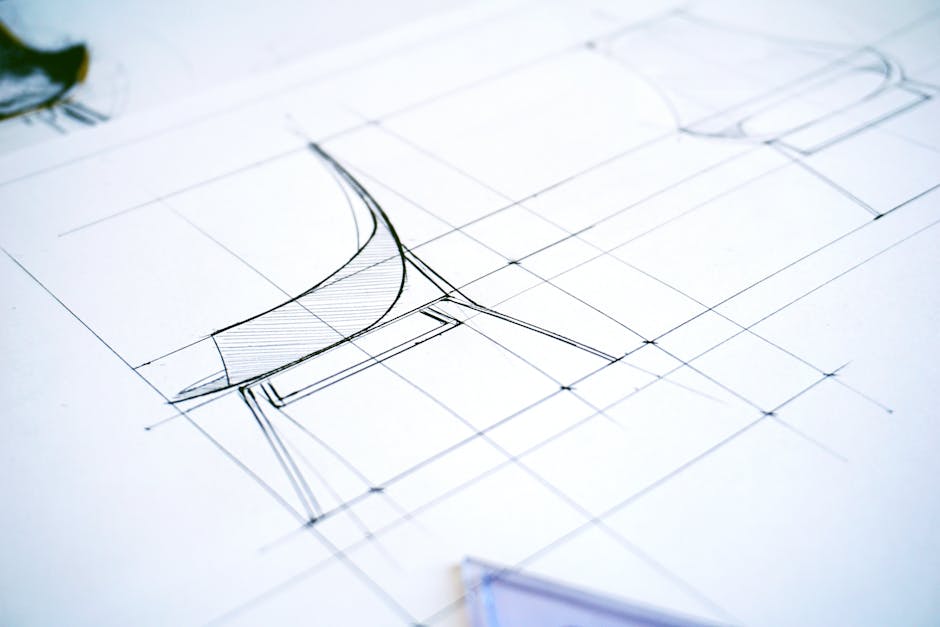1. Introduction
In an era where customers often encounter businesses online before ever stepping foot in a physical location, design can make or break their first impression. Whether it’s a website with confusing navigation, a cluttered layout, or outdated visuals, poor design can silently and steadily cost your business valuable leads and sales.
This article takes a deep dive into why effective design—spanning from branding to user interface (UI) and user experience (UX)—is crucial for small and medium-sized businesses (SMBs). As a design agency with a focus on marketing, development, and ready-made website solutions, Nveil aims to illuminate how strategic design choices can transform visitor engagement and conversion rates.
Key Insight: Even the most compelling product or service can struggle if the user’s initial interaction with your brand is marred by a visually unappealing or functionally poor interface.
2. Why Design Matters: The Changing Digital Landscape
2.1 Online-First Consumer Behavior
Today’s consumers are accustomed to quick, frictionless online experiences. They expect sites to load fast and be intuitively navigable on any device—be it a laptop, smartphone, or tablet. A well-designed online presence is often the deciding factor in whether a visitor becomes a long-term customer.
2.2 Fierce Competition
SMBs aren’t just competing with local businesses anymore; they’re vying for attention in a vast digital marketplace. High-quality design can set your brand apart, helping you rank higher on search engines like Google, Bing, Yahoo, and Yandex, and outshine less polished competitors.
2.3 Alignment with Client Awareness Levels
Unaware: Prospects don’t realize they have a design problem. Your content should educate them on the importance of visually appealing, user-friendly interfaces.
Problem-Aware: Readers know their design is subpar but don’t yet know how to fix it. Show them practical ways to identify and solve design issues.
By understanding where your prospects are in the awareness funnel, you can craft messages that resonate with their pain points, nudging them closer to solution-based content.
3. Recognizing the Signs of Ineffective Design
Does your website or marketing collateral have any of the following issues?
• High Bounce Rates: Visitors leave after viewing only one page.
• Cluttered Layout: Users can’t easily find what they’re looking for.
• Inconsistent Branding: Different colors, fonts, or visuals across platforms.
• Slow Load Times: Images or multimedia elements that bog down performance.
• Poor Mobile Responsiveness: Content doesn’t adapt well to different screen sizes.
These red flags often indicate deeper design problems that could be costing you leads, sales, and repeat business.
4. The Psychology Behind First Impressions
People form judgments about credibility and professionalism within the first 0.05 seconds of landing on a web page. This rapid impression is driven by psychological and neurological factors:
• Visual Hierarchy: Humans are wired to scan images before reading text, so your layout and graphics must be prioritized.
• Color Psychology: Different colors evoke distinct emotions. For instance, blue can convey trust, while red can indicate urgency.
• Cognitive Load: Overly complex designs tire the brain, causing visitors to abandon the page.
Takeaway: A visually appealing, logically structured design is not a luxury; it’s a psychological necessity for retaining visitors in those crucial first moments.
5. High-Competition and Moderate-Competition Keywords for SEO
When optimizing for top-tier performance on search engines, consider a balanced approach:
High-Competition Keywords
• Web design company
• UX design services
• Professional website development
• Digital marketing agency
Moderate-Competition Keywords
• Ready-made websites for small businesses
• UX/UI best practices
• Affordable web design solutions
• Conversion optimization strategies
By incorporating these keywords into your headings, meta tags, and body content, you can increase your search engine ranking without falling into the trap of keyword stuffing.
6. Key Elements of Good Design
6.1 User-Centric Approach
At the heart of user experience (UX) is empathy. Every page, layout, or button should cater to user needs, guiding them seamlessly toward the desired action—be it completing a purchase, filling out a form, or consuming informational content.
6.2 Branding and Visual Consistency
Maintaining a consistent color palette, logo placement, and typography across all marketing channels can substantially boost brand recall. Ensure your website, social media profiles, and offline materials align with each other in both look and feel.
6.3 Website Responsiveness
Over half of global web traffic comes from mobile devices. A responsive, mobile-friendly design is no longer optional. Google and other search engines prioritize mobile optimization, and so do users who will quickly bounce if a site isn’t mobile-friendly.
6.4 Clear Calls-to-Action (CTAs)
If visitors don’t know what to do next, they won’t do anything at all. Prominent, action-oriented CTAs like “Schedule a Consultation” or “Get My Free Quote” help convert passive readers into active leads.
6.5 Fast Loading Speed
Users expect pages to load in 2 seconds or less. Techniques like image compression, code minification, and reliable hosting can all contribute to faster loading times and higher engagement.
7. Consequences of Poor Design
7.1 High Bounce Rates and Low Engagement
A user who lands on a poorly designed page is more likely to leave immediately. High bounce rates signal search engines that your content isn’t meeting user needs, potentially harming your SEO.
7.2 Negative Brand Perception
A clunky or outdated design can give the impression that your business is unprofessional or behind the times. This can be particularly damaging if you’re competing against modern, savvy brands.
7.3 Missed Conversion Opportunities
If users struggle to find what they need or are turned off by an unattractive layout, they’ll abandon their journey before converting. This could mean fewer newsletter sign-ups, product purchases, or service inquiries.
7.4 Wasted Marketing Budget
Every dime spent driving traffic to a poorly designed site is a wasted investment. Campaigns might attract potential leads, but they’ll leave before the design can convert them.
8. Ready-Made Design Solutions: Are They Right for Your SMB?
For businesses with limited resources or urgent timelines, ready-made websites can be a cost-effective way to upgrade your design quickly. At Nveil, our ready-made solutions come optimized for:
• Responsive Layouts
• SEO Best Practices
• Fast Loading Speeds
And because our solutions are developed by design, marketing, and development experts, you benefit from a cohesive user experience without needing to build everything from scratch.
However, not all ready-made solutions are created equal. Watch out for providers who offer generic templates without:
• Customization options for branding
• Ongoing technical support
• Scalable architecture for growth
9. The Role of Design in Your Marketing and Development Strategy
9.1 Synergy with Digital Marketing Campaigns
• Landing Pages: Targeted, well-designed landing pages can significantly improve conversions from PPC ads and social media campaigns.
• Social Media Graphics: Visually appealing, on-brand posts can drive higher click-through rates and engagement.
9.2 Streamlined Development and Scalability
By incorporating design best practices from the outset, your website or app becomes easier to maintain and scale. Clean, well-structured code enhances site performance and integrates smoothly with marketing automation or e-commerce platforms.
9.3 Conversion-Focused Design
Design doesn’t just make things look nice—it shapes how users interact with your brand. Leveraging analytics (e.g., Google Analytics, Hotjar) to see where users drop off or how they navigate a site can inform iterative design improvements that drive higher conversions over time.
10. Common Objections to Investing in Better Design
• “It’s too expensive.” High-quality design often pays for itself through better conversion rates and user satisfaction.
• “We don’t need a fancy site.” Even simple, minimalist designs need to be strategic. “Minimalist” shouldn’t equate to “unprofessional.”
• “We rely on word-of-mouth.” Word-of-mouth is invaluable, but a strong online presence can amplify those referrals.
Overcoming these objections involves showing that design improvements directly correlate with business growth and ROI.
11. Future-Proofing Your SMB with Adaptive Design Trends
11.1 Micro-Interactions
Small, responsive animations or notifications guide user actions and offer instant feedback, increasing engagement.
11.2 AI and Personalization
As artificial intelligence becomes more accessible, personalized experiences based on browsing history or user data can dramatically boost engagement.
11.3 Dark Mode Design
Increasingly, apps and websites offer dark mode to reduce eye strain and look sleek. Implementing both light and dark modes can cater to user preferences.
11.4 Voice Search Optimization
Smart speakers and virtual assistants are altering how people search. Optimizing content for voice queries can put you ahead of competitors in relevant search results.
12. Case Study: How a Redesign Boosted Conversions by 50%
Scenario: “UrbanGreens,” a small online store specializing in organic produce, found itself struggling with high bounce rates and low add-to-cart percentages.
12.1 Challenges
• A cluttered homepage with mismatched color schemes and fonts
• No mobile-friendly layout, causing frustrations for smartphone users
• Inconsistent branding across social media and the website
12.2 The Nveil Approach
• Brand Audit: Identified a color palette and typography matching UrbanGreens’ organic theme.
• UX Overhaul: Simplified navigation, introduced larger product images, and ensured a responsive design.
• Optimized CTAs: Clear “Buy Now” and “Add to Cart” buttons on every product page.
• Performance Tuning: Compressed images and cleaned up code for faster loading speeds.
12.3 Results
• 50% Increase in Conversions: An intuitive layout gave visitors confidence to buy.
• Reduced Bounce Rate: Down 20% due to faster load times and logical navigation.
• Stronger Brand Consistency: Social media and website visuals aligned, boosting trust.
13. Why Partner with Nveil for Design and Development
• Holistic Expertise: We’re not just a design agency; we offer marketing, development, and ready-made website solutions for SMBs.
• Client-Centric Process: Every project starts by understanding your unique challenges and goals.
• Data-Driven Approach: We use analytics and user feedback to refine designs, ensuring maximum ROI.
• Ongoing Support: Post-launch, we’re available for updates, design tweaks, and scalability planning.
High-Competition Keyword: “Web design company”
Moderate-Competition Keyword: “Ready-made websites for small businesses”
14. Conclusion
Poor design might be silently bleeding leads from your business. From cluttered layouts to slow load speeds, seemingly small oversights can have an enormous impact on user perception, brand credibility, and conversion rates.
A well-designed platform—be it a website, mobile app, or marketing collateral—can serve as a powerful differentiator in an increasingly crowded digital marketplace. By focusing on user experience, visual branding, and performance, you can retain existing customers and attract new ones more efficiently.
If you’ve identified any of the red flags associated with poor design, it’s time to invest in a strategic overhaul. Whether you choose a custom-built approach or a ready-made website solution from Nveil, prioritizing design is an investment that can pay dividends for years to come.



